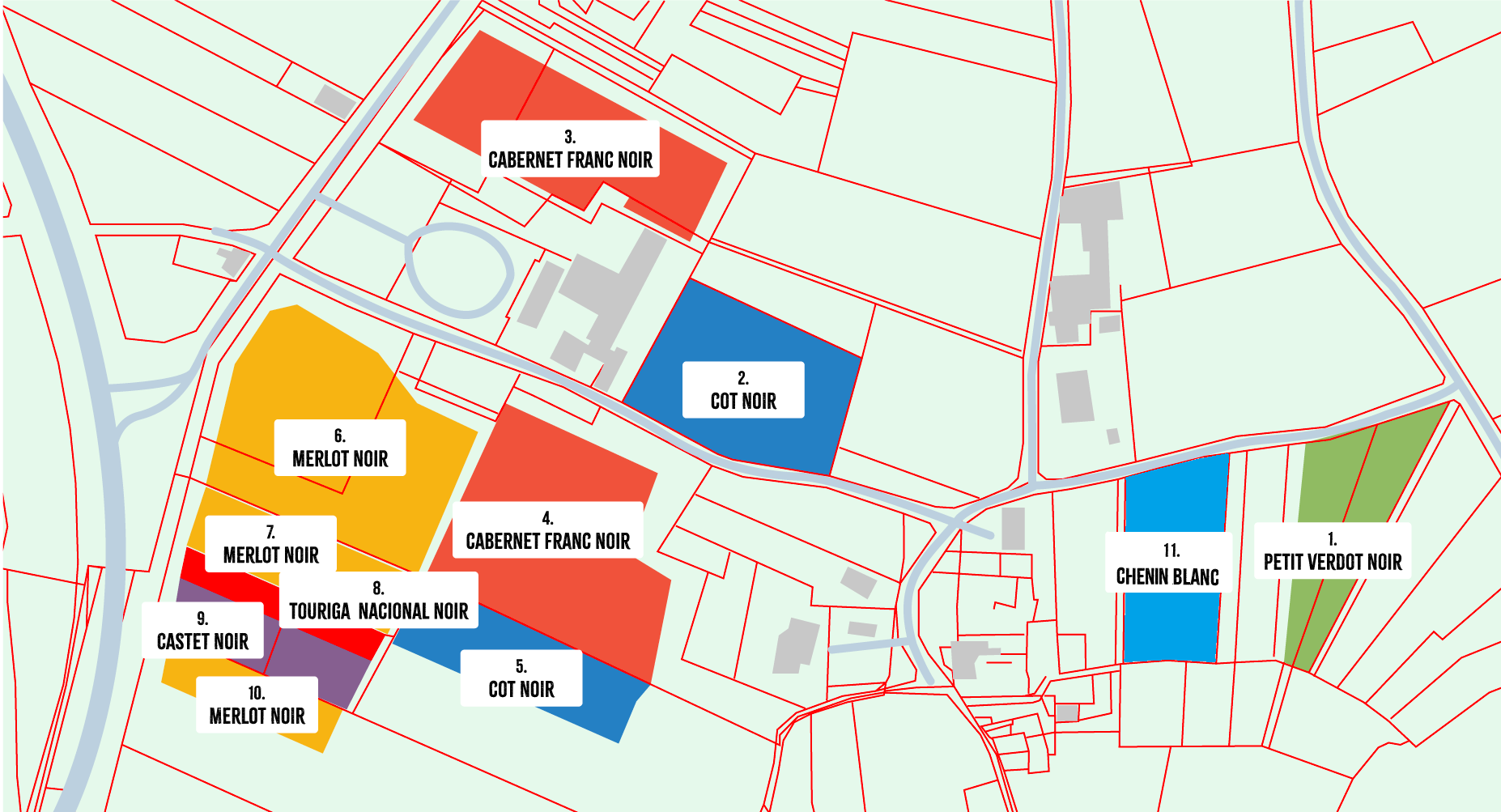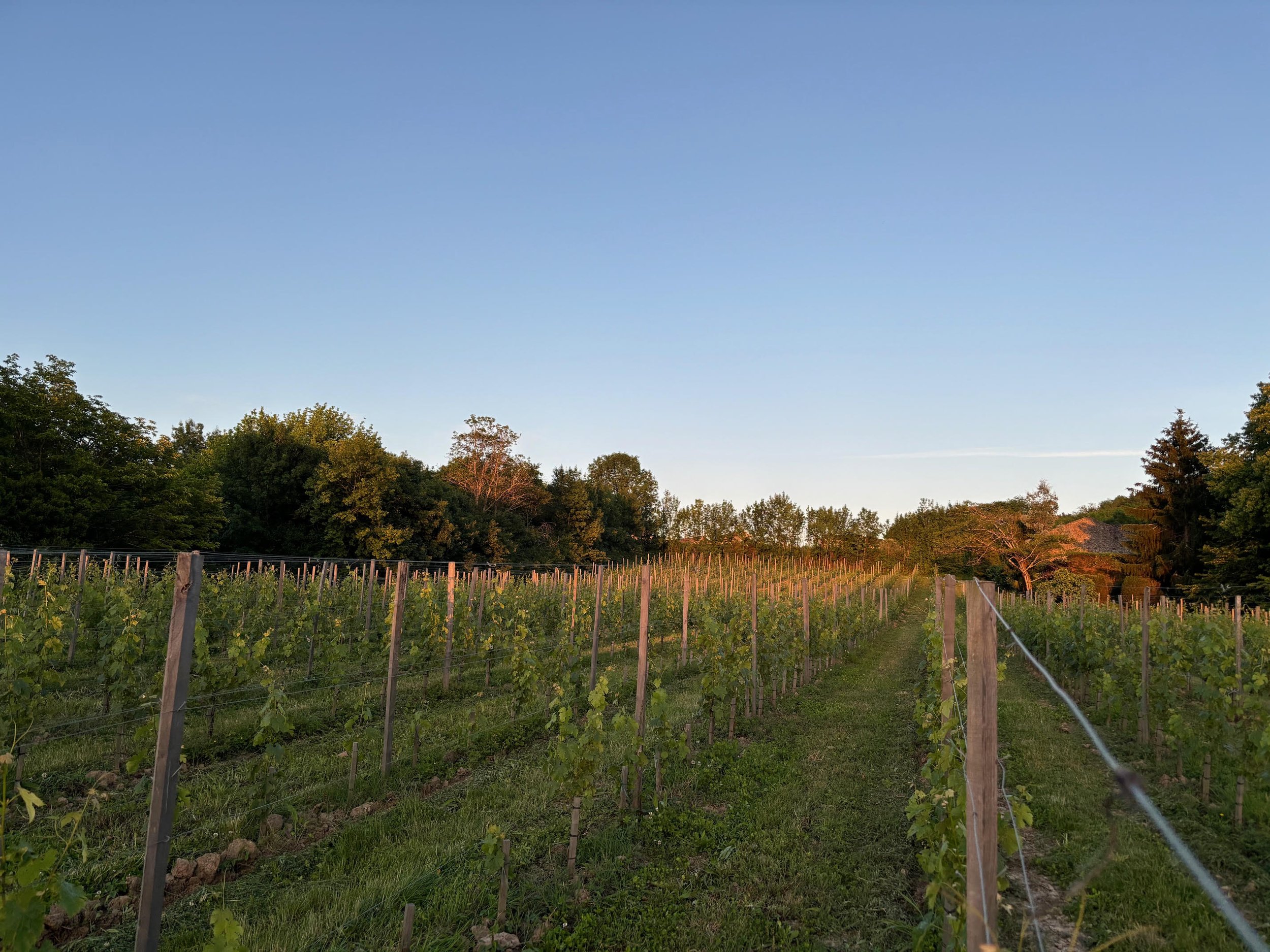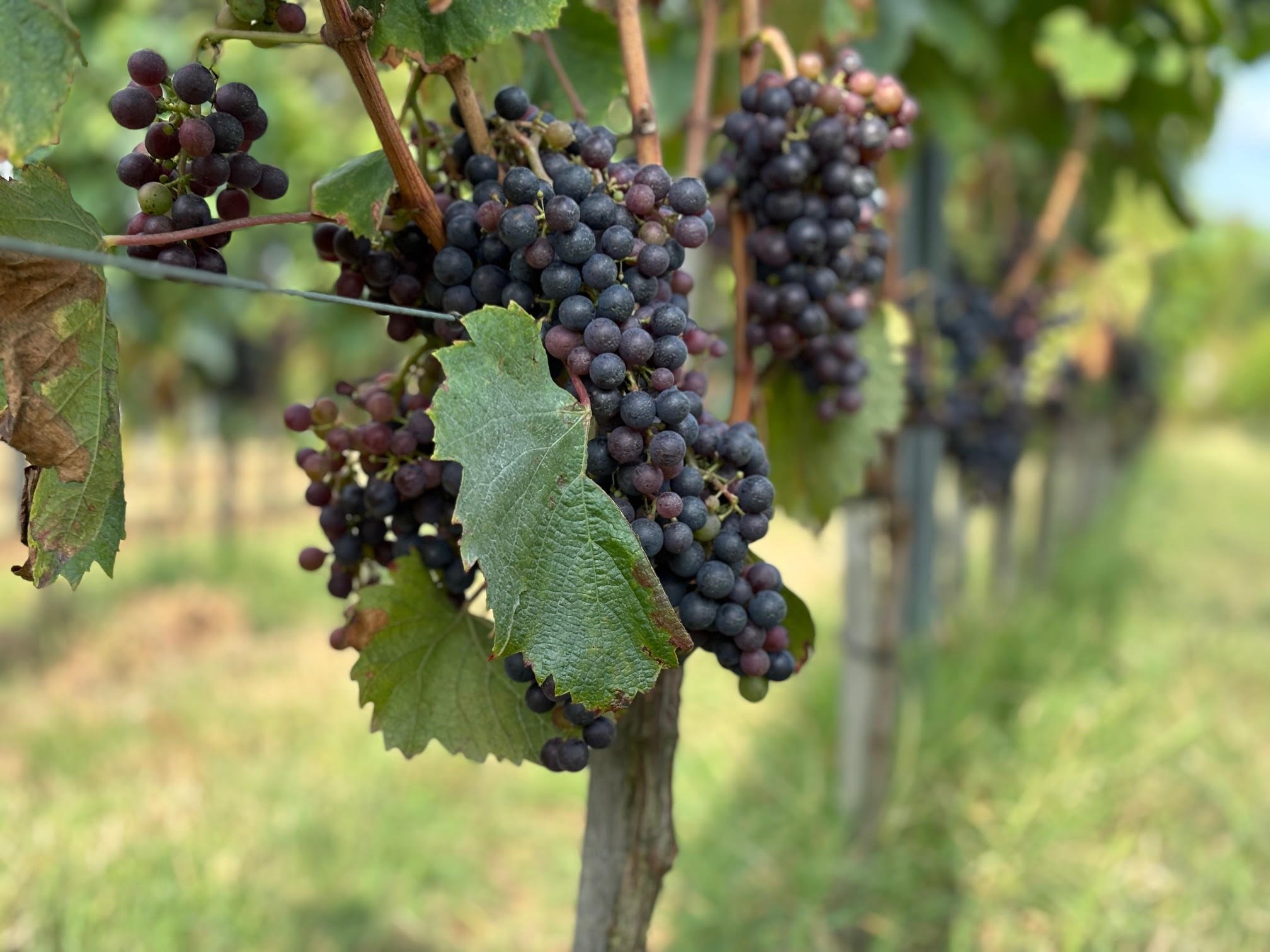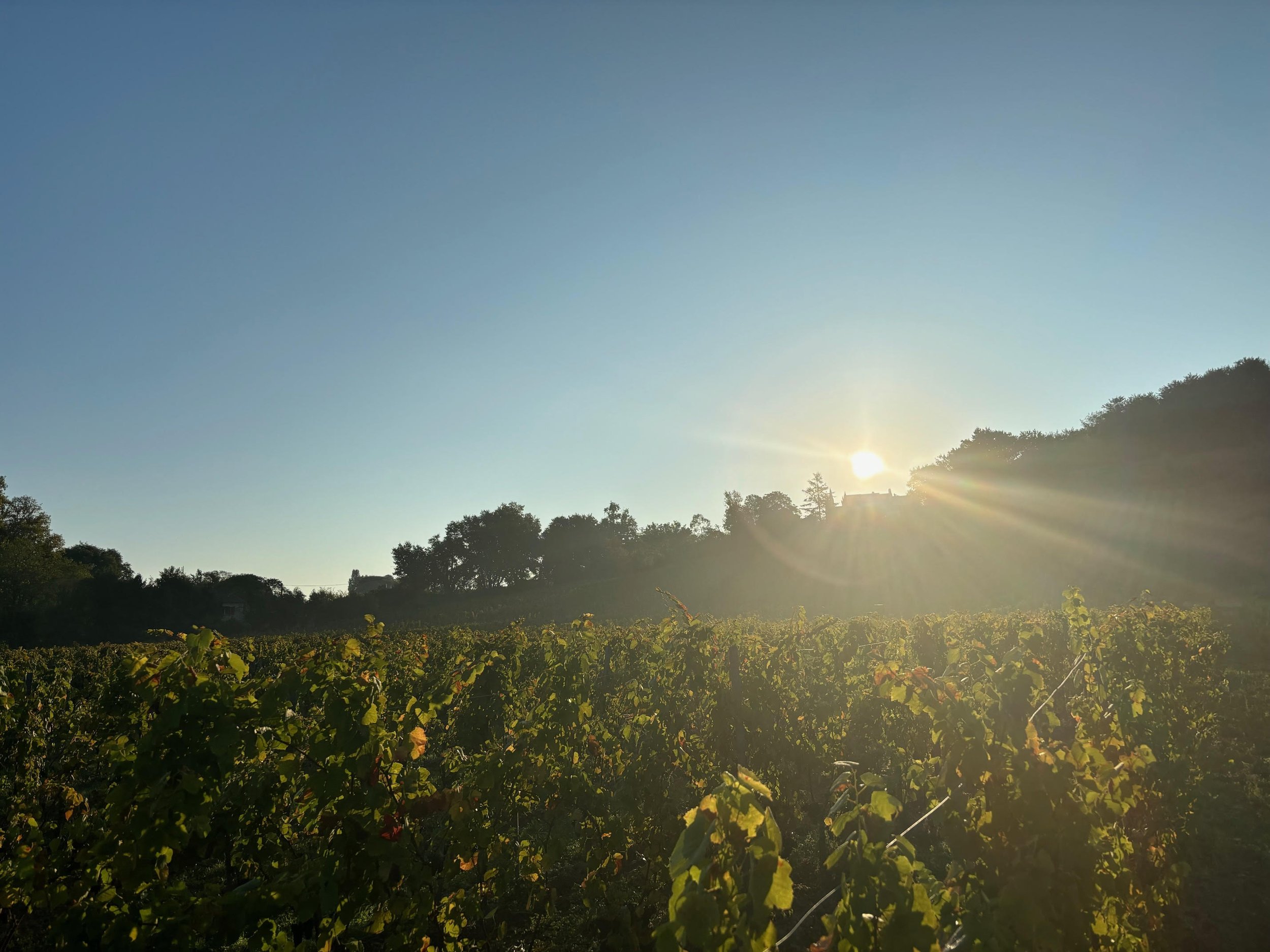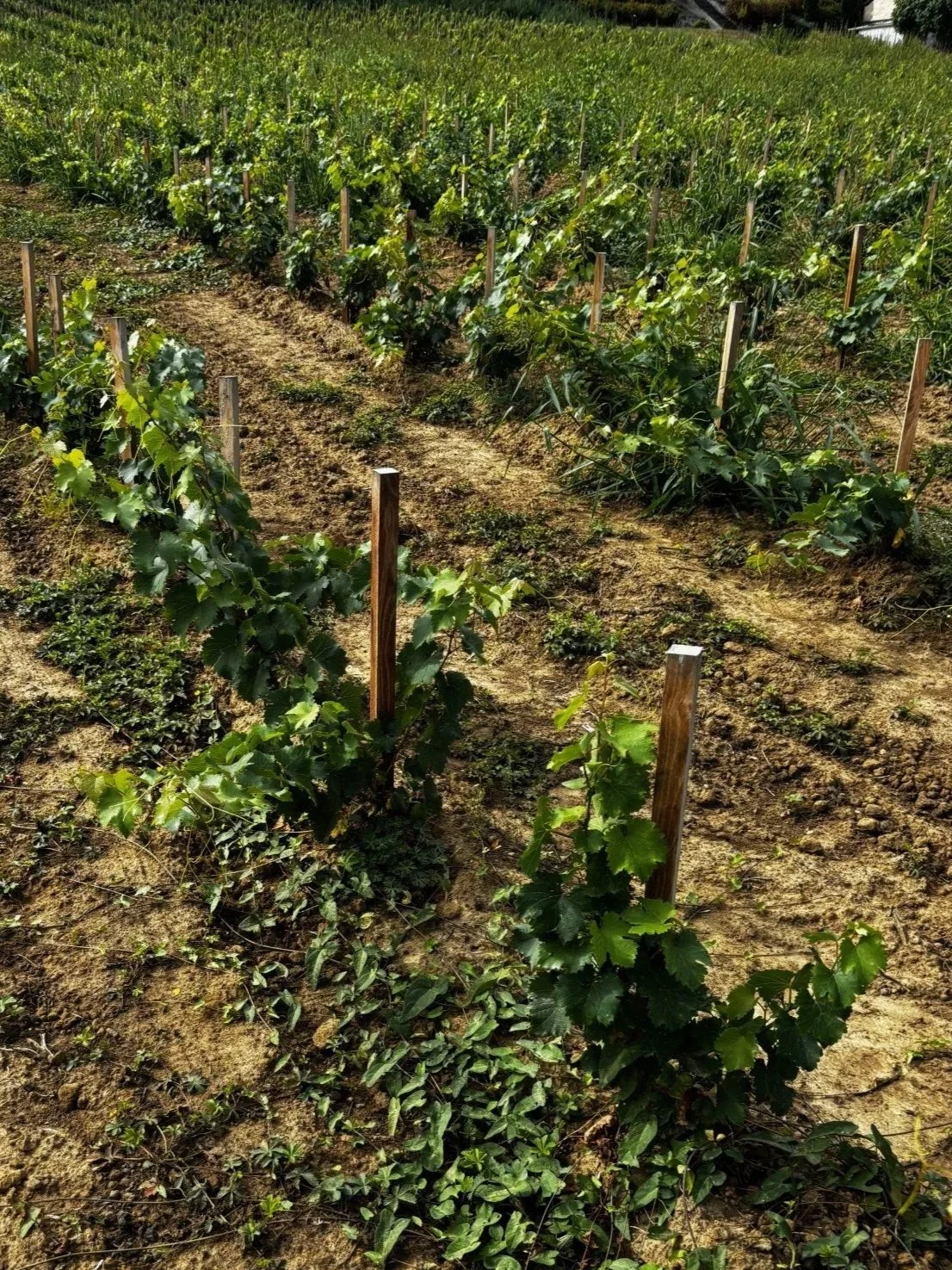Chateau La Yotte Vineyards
How it all started
We arrived in Bordeaux about ten years ago, on land where old vines had been uprooted and a local farmer had rotated crops to keep soils clean and chemical-free. The first years were about patience and testing: digging, sampling, deciding which parcels suited vines and which were better off with walnuts or olive trees.
Planting began in 2020 and still continues, each new plot scrutinised before the first stake goes in. Our goal is clear: the healthiest vines yielding ripe flavours and tannins—without runaway sugars. Six red grape varieties now stretch across our slopes, each matched to limestone and fertility with the right clone and rootstock. And because Bordeaux’s future won’t be all red, we’ve added a seventh variety—a white grape—bringing freshness and contrast. Complexity in the vineyard, and certainly in the glass.
At La Yotte, we like to think we’re writing a fresh chapter, humbly aware that these limestone slopes along the Garonne have produced wine for centuries. Now, with our own vines rooted here, we hope to add a few pages to that story.
Percentage of grape Variety
Cabernet Franc Noir 32%
Merlot Noir 27%
Cot Noir 17%
Petit Verdot Noir 6%
Castet Noir 6%
Touriga Nacional Noir 4%
Chenin Blanc 7%
Map of our vineyards
P1: Petit Verdot Noir
-
Area: 0,3742 ha
Year of Planting: 2020
Number of plants: 1356
Plant surface: 0,24 ha
-
This is our highest parcel in terms of altitude and a bit further away from the others. A relatively steep slope tucked away next to forestland, we found to our surprise sand soil with great drainage. The rootstock is 3309A.
P2: Cot Noir / Malbec
-
Area: 0,5278 ha
Year of Planting: 2020
Number of plants: 2081
Plant surface: 0,37 ha
-
Just above our winery, we find the perfect parcel for Malbec, or cot noir as it is referred to in France. The soil is nutrient rich argilo-calcaire, or clay-limestone, with a healthy slope in easterly direction. These malbecs are on 420A rootstocks.
P3: Cabernet Franc Noir
-
Area: 0,5500 ha
Year of Planting: 2021
Number of plants: 2723
Plant surface: 0,49 ha
-
On a beautiful slope towards the Garonne river and just next to the Chateau we planted old Bordelaise cabernet franc. Half of the parcel have soils with high limestone content while the lower bit has more nutrient rich clay. Therefore half sits on Fercal rootstocks and half on 3309C.
P4: Cabernet Franc Noir
-
Area: 0,8142 ha
Year of Planting: 2021
Number of plants: 4410
Plant surface: 0,79 ha
-
We expect big things from this our largest parcel facing the Garonne river. It offers challenges, both to our cabernet franc vines trying to punch through a layer of limestone, making the soil deep yellow, as well as to tractor drivers sometimes struggling with the steep climb. On Fercal rootstocks to deal with the limestone.
P5: Cot Noir / Malbec
-
Area: 0,3460 ha
Year of Planting: 2021
Number of plants: 1740
Plant surface: 0,31 ha
-
On equally steep slopes and with just as high limestone content, we planted malbec. Struggling in this rocky soil, our malbec berries will be smaller and more concentrated than the malbecs planted a year earlier with more welcoming clay. These are on Fercals to withstand the limestone.
P6: Merlot Noir
-
Area: 0,7980 ha
Year of Planting: 2021
Number of plants: 4223
Plant surface: 0,76 ha
-
The clay loamy soil further down and closest to the Garonne river is perfect for juicy merlots. The soils have high nutrient contents and are planted with 420A to fend back some fertility and yields. The merlot on Parcel 6 is a different clone to Parcel 7 with flavour complexity in mind.
P7: Merlot Noir
-
Area: 0,2360 ha
Year of Planting: 2021
Number of plants: 1231
Plant surface: 0,22 ha
-
The clay loamy soil further down and closest to the Garonne river is perfect for juicy merlots. The soils have high nutrient contents and are planted with 420A to fend back some fertility and yields. The merlot on Parcel 7 is a different clone to Parcel 6 with flavour complexity in mind.
P8:
Touriga Nacional Noir
-
Area: 0,1700 ha
Year of Planting: 2021
Number of plants: 850
Plant surface: 0,15 ha
-
We were among the first in the region (the first?) giving the national champion of Portugal a chance. Extensive soil samples suggested this was a perfect home for the vines and the last two years harvest suggest we are on to something. Not allowed in the Bordeaux appellations, wines made with a high percentage of Touriga will have to be classified as Vin de France. These are on 3309C rootstocks.
P9: Castet Noir
-
Area: 0,2370 ha
Year of Planting: 2021
Number of plants: 1274
Plant surface: 0,23 ha
-
We were among the first in the region (the first?) welcoming back this ancient Bordelaise variety. Extensive soil samples suggested this was a perfect home for the vines and the last two years harvest suggest we are on to something. So good were the first samples that we kept planting more in 2023 and are planning to continue in 2025. Not allowed in the Bordeaux appellations, wines made with a high percentage of Castets will have to be classified as Vin de France. These are on 3309C rootstocks.
P10: Merlot Noir
-
Area: 0,2360 ha
Year of Planting: 2023
Number of plants: 1231
Plant surface: 0,22 ha
-
The clay loamy soil further down and closest to the Garonne river is perfect for juicy merlots. The soils have high nutrient contents and are planted with 420A to fend back some fertility and yields. The merlot on Parcel 10 is a different clone to Parcel 6 with flavour complexity in mind.
P11: Chenin Blanc
-
Area: 0,3755 ha
Year of Planting: 2025
Number of plants: 1640
Plant surface: 0,30 ha
-
The high altitude sand soils with northern aspect is perfect to not overexpose our chenin blancs to the sun and heat of Bordeaux. We got the old 220 clones straight from Loire on 101-14 rootstocks. They are loving it at their new home and we aim for the stars.


